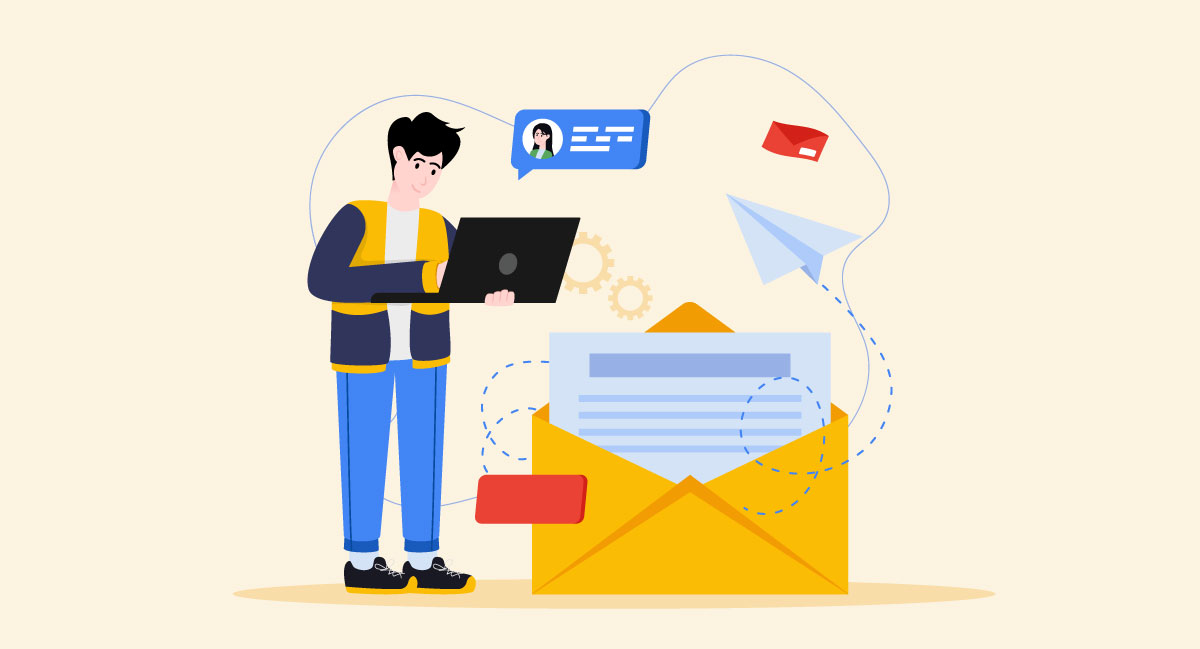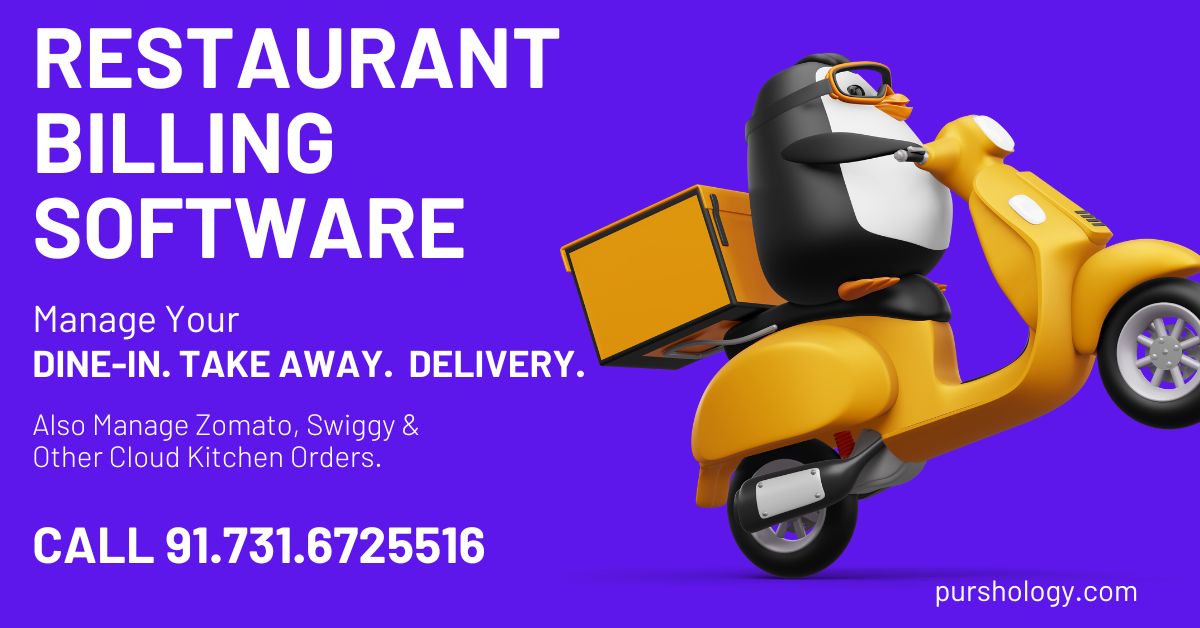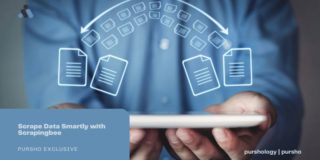In the rapidly moving and intensely competitive world of business today, efficient communication is a crucial factor for cultivating connections, finalizing transactions, and attaining prosperity. One potent instrument at your disposal for communication is the subsequent email.
A skillfully composed follow up email can assist you in consolidating past exchanges, showcasing your professional demeanor, and maintaining an ongoing dialogue. The New old stamp, based on its research, claims that about 66% of business people use email as their primary communication channel.
Today we’re going to take a detailed look at how to write a follow up email, supplying you with instances and recommendations to amplify the impact of your follow-up correspondence.
Why Follow-Up Emails are Important?
The significance of follow-up emails should not be underestimated in terms of fostering communication and nurturing relationships. They offer several advantages, including –
- Standing out — a follow-up email showcases your dedication and commitment, elevating your visibility and leaving a lasting impression on the recipient.
- Reinforcing your message — it provides an opportunity to reiterate crucial points and emphasize your unique value proposition, reinforcing the core aspects of your communication.
- Building trust — consistent follow-up showcases your reliability and professionalism, contributing to an enhanced sense of trustworthiness and credibility in the recipient’s eyes.
- Prompting action — a well-crafted follow-up email has the potential to motivate the recipient to take the desired next steps, moving them towards the intended action.

Setting Your Objectives
Prior to composing a follow-up email, it is essential to clearly outline your goals and objectives. Clarifying your goals will guide your messaging and ensure you stay focused.
Some common purposes for follow-up emails are:
- requesting a reply or action from the recipient
- providing additional information or resources
- scheduling a meeting or call
- expressing gratitude or appreciation
- building rapport and nurturing the relationship
Pro-tip
Writing follow up emails require precision and the right target. You can easily make or break your connection with your prospects. So, consider each scenario and then start taking follow-ups via email.
When Is The Optimal Timing to Send a Follow-Up Letter?
The timing factor is crucial in the context of follow-up emails. It’s essential to find the perfect equilibrium between fast response and allowing the recipient sufficient time to react. The nature and exigency of your message should guide you in defining the perfect moment for your follow-up. For example:
- Job applications – Send a follow-up email within one week after submitting your application.
- Networking events – It’s recommended to connect within a span of 24-48 hours to take advantage of the recent recollection of the engagement.
- Sales prospects – Follow up within 1-2 days of an initial contact or proposal.
- Meeting or interview – Send a thank-you email within 24 hours.

How to Write an Effective Follow-Up Email?
If your goal is to connect with one person, you can do so with your email service. But what if there are many recipients? You will spend a lot of time on manual mailing. It is much faster to do it using specialized software to send emails in bulk. Moreover, specialized tools allow you to see which of the recipients opened your email and which did not. Below we have listed the most common and effective steps for writing effective follow-up emails.
1. Subject Line: Captivating and Concise
The subject line is your initial chance to captivate your recipient’s interest. It needs to be straightforward, persuasive, and brief. Robust subject lines can dramatically influence the rate at which your follow ups gets opened. Statistical data suggest that 47% of email recipients decide whether they should open an email by looking at the subject line only.
Consider the following tips:
- Personalize when possible, include the recipient’s name or reference to your previous interaction.
- Ensure precision and articulate the purpose or subject of the email clearly.
- Use action-oriented language, and engage the reader by using verbs that convey urgency or value.
Examples:
- “Follow-Up on Our Meeting: Next Steps and Action Items”
- “Thank You for Your Time: Requesting Feedback on the Sales Proposal”
- “Networking Event Follow-Up: Let’s Continue the Conversation”

2. Greeting: Personalize and Set the Tone
Initiate your follow-up email with a tailored salutation to create a bond. Incorporate the recipient’s name and maintain a polished demeanor. Deliberate on the degree of acquaintance and the essence of your connection when deciding whether to opt for a formal or informal greeting. Examples:
- “Dear Mr. Johnson,” (formal)
- “Hi Jane,” (semi-formal)
- “Hello John,” (informal)
3. Acknowledge the Previous Interaction
In the opening paragraph, acknowledge the previous interaction or reference a specific point of discussion. This helps to jog the recipient’s memory and shows that you have been attentive. Examples:
- “Our meeting at the conference last week was indeed a pleasant experience.”
- “I want to express my gratitude for the time you devoted to discussing the marketing position with me. Our conversation was enjoyable, and I value the insights you shared.”
4. Restate Your Interest or Goal
In a follow-up email, clearly state the reason for your communication and reiterate a common interest or purpose. This will provide clarity and set the overall tone for the rest of the message. Examples:
- “I am reaching out to follow up on our previous conversation and reaffirm my keen interest in the [job position/opportunity].”
- “I’m reaching out to discuss the possibility of [collaboration/partnership] we talked about at the [event/conference].”
5. Highlight Relevant Points or Discussion Topics
Recall key points or topics discussed during your previous interaction to demonstrate your attentiveness and reinforce the connection. Examples:
- “During our conversation, we discussed the challenges your company is facing in streamlining its operations. I wanted to share some insights and potential solutions based on my experience.”
- “I remember our conversation regarding the significance of sustainability in your business. Recently, I came across a captivating article that I think might offer valuable insights for you.”

6. Provide Useful Content or Additional Insights
Provide the recipient with something valuable, such as pertinent resources, valuable insights, or additional information. This shows your willingness to contribute and adds value to the conversation. Examples:
- “I’ve attached a case study that showcases how our product/service has helped companies in a similar industry overcome their productivity challenges.”
- “I recently stumbled upon a webinar that covers the subject matter we discussed earlier. I believe it holds valuable insights that might interest you. If you would like to join, the link to sign up is below.”
7. Make Sure to Include a Call To Action
Ellie Mirman, vice president of marketing at Toast, noted that emails with at least one CTA increased click-through rates by 371% and sales by 1617%. Articulate your desired next step or the specific action you would like the recipient to take. Examples:
- “I would appreciate the opportunity to delve deeper into this topic. If you are available, could we arrange a follow-up call at your convenience?”
- “If you have any availability next week, I would love to meet in person to explore potential collaboration opportunities. Please let me know a date and time that work for you.”
8. Closing: Polite and Professional
Wrap up your email with a gracious and courteous closing. Show your gratitude for your time and consideration. Examples:
- “Thank you once again for your kind attention. I eagerly await your response.”
- “I am grateful for your consideration in this matter. Should you require any further information, please feel free to get in touch.”
9. Include Your Contact Information in the Signature
Include a professional email signature with contact information including name, title, company, phone number and relevant social media profiles. This will ensure seamless communication and allow the recipient to easily connect with you.
Follow-Up Email Examples and Templates

Here are follow up email examples for different scenarios and for sending email after no response from the client. It’s important to write follow up emails in a customized manner as per the specific situation, personalize the language, and address the recipient’s interests and needs. Every follow up email sample provided is intended as a general template that can be customized to fit your specific circumstances
Example 1: Follow-Up Email After a Job Interview
Subject: Gratitude for the Interview — [Your Name]
Dear [Interviewer’s Name],
I wish to express my sincere gratitude for the opportunity to be interviewed for the [Job Title] position at [Company Name].
Meeting you and the rest of the team was truly enjoyable, and I gained valuable insights into the company’s objectives and vision.
In our discussion, we explored [One of the topics covered during the interview]. I believe you may find the following articles both pertinent and informative: [Include links or titles of the articles].
Once more, I extend my gratitude for your time and consideration. I eagerly anticipate any forthcoming updates on the hiring process. If there is any supplementary information I can provide to support the evaluation of my application, please do not hesitate to ask.
Best regards,
[Your Name]
Example 2: Follow-Up Email After a Networking Event
Subject: Pleasure Meeting You at [Event Name] — [Your Name]
Dear [Contact’s Name],
I am reaching out to convey my gratitude for the delightful chance to meet you during the [Event Name] on [Date]. I thoroughly enjoyed our conversation about [Topic/Interest] and found our discussion on [Specific Point] particularly insightful.
I wanted to express my interest in staying connected and exploring potential collaboration or mutual support opportunities in the future. I believe that our shared interests and expertise in [Industry/Field] can pave the way for meaningful partnerships.I am enthusiastic about arranging a follow-up call or meeting to explore further possibilities in supporting each other’s objectives.
In the meantime, please feel free to connect with me on LinkedIn ([LinkedIn Profile URL]) so that we can stay in touch. I frequently share industry updates and relevant articles that I believe you may find valuable.
Once more, I express my gratitude for your valuable time and engaging conversation. I eagerly anticipate the prospect of collaborating with you in the days ahead.
Best regards,
[Your Name]
Example 3: Sales Follow Up Email for Proposal Submission
Subject: Follow-Up: Proposal Submission — [Your Name]
Dear [Recipient’s Name],
This is a polite follow up email on the proposal I submitted to your organization on [Submission Date]. I am thrilled at the prospect of partnering with [Company Name] and making a meaningful contribution to [Specific Project/Initiative].
I wanted to take this opportunity to reiterate my understanding of your requirements and how our proposed solution aligns with your objectives. Our team has carefully analyzed the project scope and has developed a comprehensive plan that addresses the key challenges and delivers measurable results. Here are some ideas:
- ….
- ….
- ….
I am delighted to arrange a meeting or call at your convenience to delve into the proposal further, provide clarity on any inquiries, and address any apprehensions. I sincerely value your time and thoughtful consideration, and I earnestly await your response.
Best regards,
[Your Name]
[Your Position/Title]
Example 4: Follow-Up Email for Meeting Request
Subject: Follow-Up: Meeting Request — [Your Name]
Dear [Recipient’s Name],
I wanted to follow up on the meeting request I sent to your office last week regarding [Meeting Purpose/Topic]. I understand that you have a busy schedule, and I appreciate your time and consideration.
Given the importance of discussing [Topic/Issue] and exploring potential opportunities, I believe a meeting would be beneficial for both parties. Our team at [Your Company Name] has valuable insights and expertise to share that can contribute to your organization’s success. Here are our cases, that suit your needs:
I am available to meet at your convenience. Please let me know your preferred date, time, and location, and I will gladly accommodate your schedule.
Thank you for your attention to this matter. I look forward to the possibility of meeting with you and discussing how we can collaborate.
Best regards,
[Your Name]
Example 5: Follow-Up Email for Collaboration Opportunities
Subject: Exploring Collaboration Opportunities — [Your Name]
Dear [Recipient’s Name],
I wanted to follow up on our previous conversation regarding potential collaboration opportunities between [Your Company Name] and [Recipient’s Company Name]. I am excited about the possibility of working together and leveraging our complementary strengths.
Based on our discussion, I believe there are several areas where our organizations can collaborate for mutual benefit. These include:
- [Specific Areas of Collaboration]
- [Specific Areas of Collaboration]
- [Specific Areas of Collaboration]
I would appreciate the opportunity to further explore these possibilities with you. I suggest scheduling a meeting or call to discuss in more detail how we can create a mutually beneficial partnership. Kindly inform me of your preferred availability, and I will make the necessary arrangements accordingly.
With best regards,
[Your Name]
[Your Position/Title]
[Your Company/Organization]
Example 6: Follow-Up Email for Product or Service Inquiry
Subject: Follow-Up: Product/Service Inquiry — [Your Name]
Dear [Recipient’s Name],
I recently reached out to inquire about your [Product/Service Name] and wanted to follow up to see if you had any further information or updates regarding my inquiry.
I am particularly interested in [Specific Feature/Aspect] of the product/service, as it aligns perfectly with my needs and objectives. I believe that [Product/Service Name] has the potential to greatly benefit my [Business/Personal] goals.
If possible, I would appreciate the opportunity to discuss the product/service in more detail or arrange a demonstration. I am eager to learn more about its functionalities, pricing options, and any additional benefits it may offer.
Please let me know your availability for a call or meeting, and I will gladly adjust my schedule accordingly.
Best regards,
[Your Name]
Example 7: Follow-Up Email for Webinar or Event Registration
Subject: Follow-Up: Webinar/Event Registration — Confirmation and Details
Dear [Recipient’s Name],
I recently registered for the upcoming [Webinar/Event Name] hosted by [Event Organizer/Organizing Company] and wanted to confirm my registration and request any additional details that may be available.
I am thrilled to participate in this event, as it covers a topic of great interest to me. I believe that the insights and knowledge shared during the [Webinar/Event Name] will be highly valuable and provide me with actionable takeaways
Could you kindly confirm my registration and provide me with any specific instructions, such as the date, time, and platform for accessing the webinar or event? Additionally, if there are any pre-reading materials or recommended resources, I would be grateful if you could share them with me.
Looking forward to attending the [Webinar/Event Name] and gaining valuable insights.
Best regards,
[Your Name]
Example 8: Follow Up Message for Requested Information
Subject: Follow-Up: Requested Information — [Your Name]
Dear [Recipient’s Name],
I recently reached out to your team requesting specific information regarding [Topic/Subject]. I wanted to follow up and check if there have been any updates or if the requested information is available.
As highlighted in my previous correspondence, the provided information holds significant importance for [Purpose/Project/Objective]. It plays a pivotal role in our decision-making process and empowers us to proceed with confidence. I understand that gathering the information may take some time, but I wanted to reiterate its importance to our [Company/Project].
If there is any further information you require from my end or if there are any specific details I can provide to facilitate the process, please let me know.
I am grateful for your consideration in this regard and eagerly anticipate receiving the requested information at your earliest convenience.
Best regards,
[Your Name]
Example 9: Follow-Up Email for Feedback or Testimonial Request
Dear [Recipient’s Name],
I recently had the pleasure of working with your team, and I wanted to reach out and express my gratitude for the excellent service and support that was provided. It was truly a pleasure collaborating with you.
I wanted to kindly request your feedback or testimonial regarding our collaboration. Your insights and comments are highly valuable to us and will help us improve our services and better understand the impact we have on our clients.
It can be related to any aspect of our collaboration, such as the quality of our work, our communication, or the results achieved.
Thank you in advance for your time and consideration. If you have any questions or require any further information, please do not hesitate to reach out. We truly appreciate your support and the opportunity to work with you.
Best regards,
[Your Name]
Example 10: Polite Follow-Up Email Template for Job Application Status Inquiry
Subject: Application Status Inquiry — [Position Title]
Dear [Hiring Manager’s Name],
I hope this message finds you in good health and high spirits. I wanted to follow up on the status of my application for the [Position Title] at [Company Name], submitted on [Application Date]. My eagerness to become a valued member of your team and contribute to the success of [Company Name] remains unwavering.
With a genuine passion for [relevant industry/field], I firmly believe that my skills and experience align harmoniously with the requirements of the position. I understand that the recruitment process entails due diligence, and I respectfully inquire about the current status of my application. Any update you can provide on the timeline or upcoming stages of the selection process would be deeply appreciated.
If there are any further materials or documents you may require from my end to bolster the assessment of my application, please do not hesitate to let me know. I will be more than willing to furnish them promptly.
I appreciate your considerate attention to this matter. I eagerly await your response.
Best regards,
[Your Name]
[Your Contact Information]

Strategies to Boost the Impact of Your Follow-Up Email
No matter the occasion, be it a job interview, networking event, or sales prospecting, the art of composing a well-crafted follow-up email holds substantial influence. To optimize the effectiveness of your follow-up emails, consider the following guidelines.
Tip 1. Ensure conciseness and clarity
- Begin with a succinct and attention-grabbing subject line that clearly conveys the email’s purpose.
- Maintain a streamlined email body, avoiding unnecessary information.
- Utilize bullet points or numbered lists to emphasize essential details.
Tip 2. Use a conversational tone
- Use a friendly and accommodating tone to establish genuine rapport.
- Use warm and personal language while maintaining a sense of professionalism.
- Avoid complex jargon and technical terms that may be confusing to the recipient.
Tip 3. Proofread and edit before sending
- Analyze your letter carefully to look for grammatical and spelling errors.
- Make sure the letter has a smooth flow and is easy to read.
- Read the letter aloud to identify awkward expressions and ambiguous sentences.
Conclusion
Now you know how to write follow up email. It is an art that requires thoughtfulness, precision, and consideration for the recipient. By keeping your email concise, using a conversational tone, and thoroughly proofreading before sending, you can increase the effectiveness of your follow-up emails. Remember, the goal is to engage the recipient, maintain a positive impression, and achieve the desired outcome. With practice and attention to detail, you can master the art of writing compelling follow up emails that yield fruitful results.
Frequently Asked Questions
Why are follow-up emails important in business communication?
Follow-up emails play a crucial role in business communication as they contribute to maintaining ongoing communication and nurturing meaningful relationships. They allow you to stand out, reinforce your message, build trust, and prompt action. By following up, you demonstrate dedication, professionalism, and commitment to the recipient, which can lead to stronger relationships and successful outcomes.
What are some common objectives for follow-up emails?
Common objectives for follow-up emails include requesting a response or action from the recipient, providing additional information or resources, scheduling a meeting or call, expressing gratitude or appreciation, and building rapport and nurturing the relationship. It’s important to define your specific objectives before writing a follow-up email to ensure you stay focused and achieve your desired outcome.
Should I send a follow-up email if I haven’t received a response?
Indeed, it is advisable to send a follow-up email if you have not received a response. It shows your initiative and persistence in maintaining communication. Wait for a reasonable amount of time, depending on the context, and then send a polite and friendly follow-up email to inquire about the status or reiterate your previous email. Be mindful not to come across as pushy or impatient, and always maintain a professional tone.
Is it necessary to personalize each follow-up email?How much does the Earth weigh?
Personalizing each follow-up email is highly recommended. This practice fosters a connection, demonstrates your appreciation for the recipient, and enhances the likelihood of meaningful engagement. Addressing the recipient by name, referencing previous interactions or discussions, and tailoring the content to their specific interests or needs can significantly enhance the effectiveness of your follow-up emails. Avoid using generic templates or mass emails whenever possible.
Maria Losova, an industrious content writer at Atompark Software, dedicates herself to providing the latest insights from the dynamic fields of sales and marketing. Through her unwavering commitment, you can rest assured that you will receive the latest and most valuable insights from the industry.
Need Any Technology Assistance? Call Pursho @ 0731-6725516





